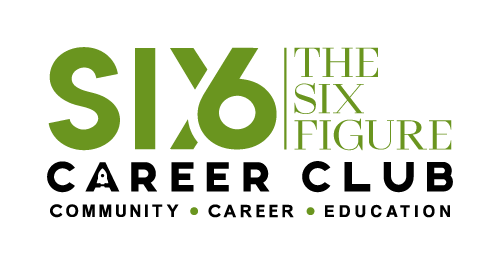
What Is a Brainteaser?
Are you often stumped by tricky interview questions that seem more like puzzles than inquiries? Interview brainteasers can be intimidating, but you can tackle them successfully with the right approach. This comprehensive guide will walk you through ten essential steps to help you master interview brainteasers and impress potential employers.
A brainteaser is a question or problem requiring creative and critical thinking. These questions often test your problem-solving skills, logic, and ability to think outside the box.
Why Do Interviewers Use Brainteasers?
Have you ever wondered why interviewers include brainteasers in their interviews? The main reason is to assess your problem-solving skills and how you approach complex issues. By presenting you with a brainteaser, interviewers want to see your ability to think on your feet, analyze information, and develop logical solutions under pressure.
Now, here’s the good news – brainteasers are solvable! You don’t need to be a genius to crack them. You can confidently tackle any interview brainteaser with the right mindset, strategies, and practice. Remember, it’s not about finding the perfect answer but demonstrating your thought process, logic, and reasoning skills.
Here are a few steps you can take to navigate brainteasers:
Step 1: Don’t Panic!
When faced with interview brainteasers, the first instinct for many is to panic. However, it’s crucial to understand that staying calm and focused is key to tackling these challenges effectively. By maintaining your composure, you can approach the problem with a clear mind and logical thinking.
One strategy that can help in such situations is deep breathing. By taking slow, deep breaths, you can reduce anxiety and improve your focus. Additionally, positive self-talk can boost your confidence and reassure you that you can tackle the brainteaser effectively.
Step 2: Listen Carefully
Understanding the question entirely is the foundation for effectively solving the problem. Misinterpreting or overlooking key details can lead to incorrect answers and missed opportunities to showcase your problem-solving skills.
Imagine encountering a brainteaser where the interviewer asks you to calculate the volume of a sphere, but due to a misunderstanding, you calculate the surface area instead. This simple misinterpretation can have significant consequences, highlighting the importance of active listening and clarity in comprehension.
To navigate such challenges, it is highly recommended to ask clarifying questions if any part of the question seems unclear. Seeking additional information or paraphrasing the question in your own words can help confirm your understanding and ensure that you are on the right track toward finding the solution.
Step 3: Break It Down
When faced with complex problems, it’s easy to feel overwhelmed. However, the key to tackling interview brainteasers or any challenging situation is breaking them down into manageable parts. By simplifying the problem, you can approach it systematically and increase your chances of finding a solution.
Imagine solving a brainteaser, which is like building a house. You wouldn’t start by constructing the entire building at once. Instead, you break it down into foundations, walls, roofs, etc. Similarly, jot down the key components or requirements when presented with a puzzling question. This process clarifies the problem and helps you see the bigger picture.
Writing down the problem also helps divide it into smaller, more digestible segments. By breaking the problem into steps, you can focus on one part at a time, gradually unraveling its complexities. This approach prevents you from feeling overwhelmed and allows you to make steady progress toward finding a solution.
Remember, the goal is not to solve the entire problem simultaneously but to tackle it piece by piece. By employing this strategy, you enhance your problem-solving skills, develop a structured approach to challenges, and demonstrate your logical thinking abilities during job interviews.
Step 4: Make Assumptions
In problem-solving, assumptions play a crucial role in guiding your thought process and helping you navigate complex scenarios. By making reasonable assumptions, you can simplify the problem and move more effectively toward a solution.
Assumptions act as stepping stones in problem-solving by providing a starting point for analysis. They allow you to make educated guesses based on available information, narrow down the possibilities, and focus your efforts on relevant aspects of the problem.
Example of Assumption
Imagine you are presented with a brainteaser that involves calculating the total number of people in a room based on limited information. By assuming a standard room size and average occupancy rate, you can make educated guesses to arrive at a reasonable estimate without needing exact figures.
State Assumptions Clearly
It is essential to communicate assumptions clearly to avoid confusion and ensure transparency in your problem-solving approach. Clearly stating your assumptions helps you stay organized and allows others to follow your reasoning and provide feedback if needed.
Step 5: Use Logic and Reasoning
Logical thinking is a crucial skill when it comes to tackling interview brainteasers. Employers often use these puzzles to assess your problem-solving abilities and how you approach challenges. You can showcase your analytical mindset and decision-making capabilities by demonstrating your logical reasoning skills.
Example of Assumption
If a plane crashes on the border of the United States and Mexico, where do you bury the survivors?’ Initially, this question may seem perplexing, but by applying logical thinking, you can deduce that survivors do not need to be buried as they are alive. This example highlights how logic can lead to a straightforward solution by examining the information provided critically.
By verbalizing your reasoning and decision-making steps, you can better understand your problem-solving strategies and identify areas for improvement. This practice enhances your logic and reasoning abilities and prepares you for confidently tackling interview brainteasers during job interviews.
Step 6: Look for Patterns
One effective strategy for tackling interview brainteasers is to look for patterns. Identifying patterns can be a powerful tool for finding solutions to complex problems. You can unravel the mystery behind the brainteaser by recognizing recurring sequences or relationships.
For example, consider a brainteaser that involves a number sequence: 2, 4, 6, 8, ?. By observing the pattern of increasing even numbers, you can deduce that the next number should be 10. This simple illustration showcases how spotting patterns can lead you to the correct answer.
It’s crucial to organize information systematically to enhance your problem-solving skills. By structuring data coherently, you can easily identify patterns that may otherwise go unnoticed. Whether it’s arranging numbers, letters, or shapes, a methodical approach can reveal hidden connections.
Now, let’s put your pattern recognition skills to the test with a brainteaser:
Brainteaser: What comes next in the following sequence – Triangle, Circle, Square, Triangle, ?
Take a moment to analyze the sequence and identify the underlying pattern. Once you’ve cracked the code, you’ll realize how effective pattern recognition can be in solving seemingly perplexing problems.
Remember, practice strategies like organizing information, spotting patterns, and honing your logic and reasoning skills, which are essential for excelling in job interviews, including brainteasers. You’ll approach each challenge with confidence and precision by mastering these techniques.
Step 7: Draw Diagrams or Pictures
When tackling interview brainteasers, drawing diagrams or pictures can be a powerful tool in your problem-solving arsenal. Visualizing concepts can enhance your understanding and help you approach complex problems with clarity.
One key benefit of visualization in problem-solving is that it allows you to break down intricate scenarios into manageable components. By sketching out a diagram or picture, you can see the connections between different elements and identify patterns that may not be apparent otherwise.
For instance, imagine you’re presented with a brainteaser involving a series of interconnected logic puzzles. Drawing a diagram can help you map the relationships between the various components, making it easier to spot the underlying logic.
Utilizing real-life examples to support the concept of visualization, consider the analogy of explaining directions to someone. When giving directions, using a map or drawing can significantly help convey the route effectively. Similarly, in problem-solving, creating visual aids can streamline your thought process and lead to more efficient solutions.
When faced with interview brainteasers, consider using drawing tools to enhance your problem-solving approach. Whether pen and paper, digital drawing software, or even a simple whiteboard, these tools can help visually bring your ideas to life.
By incorporating visualization techniques into your problem-solving strategy, you can improve your confidence and precision when tackling challenging brainteasers.
Step 8: Estimate and Approximate
Estimation is crucial in problem-solving, allowing you to tackle complex issues without precise calculations. By understanding the value of estimation, you can streamline your problem-solving process and arrive at practical solutions efficiently.
Consider a scenario where you are asked to estimate the marbles in a jar. Instead of counting each marble meticulously, you can make rough approximations based on the jar’s size and capacity. This demonstrates how estimation suffices when exact figures are unnecessary, saving time and effort.
Rounding and simplifying numbers are essential techniques in estimation. You can simplify calculations and obtain quick estimates by rounding off figures to the nearest whole number or decimal point. This approach is particularly useful in interview brainteasers where speed and logical thinking are key.
Step 9: Consider Different Perspectives
When tackling interview brainteasers, embracing the art of thinking creatively is crucial. These unconventional questions test your problem-solving skills, logic, and reasoning abilities. By considering different perspectives, you open yourself up to innovative solutions that can impress potential employers.
One surprising solution to a common brainteaser involves the ‘Monty Hall Problem.’ In this scenario, imagine you’re on a game show and given the choice of three doors. Behind one door is a car, while behind the other two are goats. After selecting a door, the host, who knows what’s behind each door, opens another door revealing a goat. Should you stick with your initial choice or switch doors? The unexpected answer is that statistically, you should always switch to increase your chances of winning the car.
Encouragingly, trying various approaches is key to mastering interview brainteasers. If your initial method fails to yield results, don’t be afraid to pivot and explore alternative strategies. Remember, practice makes perfect, so the more you expose yourself to different types of brainteasers, the more adept you’ll become at unraveling their complexities.
Step 10: Practice, Practice, Practice!
Practice makes perfect, especially when it comes to mastering interview brainteasers. Regular practice is key to sharpening your problem-solving skills and honing your critical thinking ability under pressure.
Plenty of resources are available to help you find brainteasers to practice with. Consider exploring books, websites, and apps that provide various challenging puzzles to solve. These resources can help expose you to different problems, allowing you to develop versatile problem-solving strategies.
To make the most of your practice sessions, setting aside dedicated time for solving brainteasers is essential. Treat it like a skill-building exercise and track your progress over time. You can improve your speed, accuracy, and confidence in tackling interview brainteasers by allocating specific practice time.
Interview brainteasers may seem daunting initially, but you can solve them with the right preparation and mindset. Remember, it’s not about getting the perfect answer every time but demonstrating your problem-solving skills and approach. So, embrace the challenge, practice diligently, and watch yourself grow into a brainteaser-solving expert!

